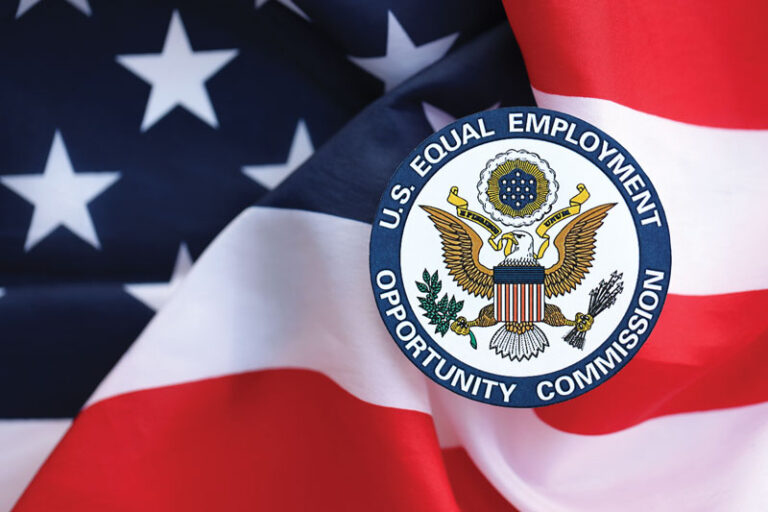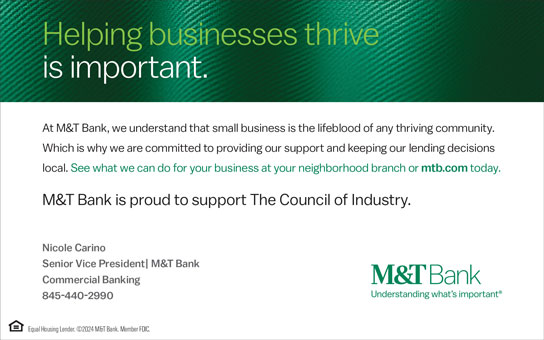TRUMP 2.0:
LABOR AND EMPLOYMENT
considerations FOR EMPLOYERS

Donald J. Trump returned to the Presidency for a second non-consecutive term on January 20, 2025. After taking office, President Trump issued hundreds of Executive Orders, many with a direct impact on employers of all shapes and sizes. Since the EOs and other government actions, a flurry of court challenges filed by various interest groups have followed.
Considering the pace of EOs and court challenges, it is difficult for employers and their counsel to keep up, much less predict how it will shake out between the writing and printing of this article. Hopefully, some practical guidance for manufacturing employers will follow.
The NLRB and EEOC Lack a Quorum
In the first days of his administration, President Trump removed Charlotte Burrows and Jocelyn Samuels from the Equal Employment Opportunity Commission, ending a Democratic Commission majority and leaving the commission with two members. President Trump also removed Board Member Gwynne Wilcox from the National Labor Relations Board, also leaving two Board members. As a result, both the EEOC and NLRB lacked a quorum necessary for these agencies to conduct some business. On March 5, 2025, a federal judge issued an injunction ordering Wilcox reinstated to the NLRB. On March 11, 2025, the Trump administration appealed the judge’s order reinstating Wilcox to the NLRB.
Also, at the EEOC, Republican Commissioner Andrea Lucas was named acting chair. President Trump also fired General Counsel Karla Gilbride and appointed Andrew B. Rogers as acting general counsel. Rogers previously served as chief counsel to Acting Chair Lucas.
After her appointment, Acting Chair Lucas set forth to implement policies reflecting the president’s Executive Order 14168, “Defending Women From Gender Ideology Extremism and Restoring Biological Truth to the Federal Government.” Lucas announced the EEOC’s priority to “defend the biological and binary reality of sex and related rights, including women’s rights to single-sex spaces at work.” She also ended the use of the “X” gender marker and “Mx.” prefix for the charge intake and removed materials promoting “gender ideology” from the Commission’s websites and documents.
Impact on Litigation
The lack of an EEOC quorum may affect new litigation filings. Under a prior Commission resolution, the Commission must approve certain types of litigation, such as pattern and practice cases and systemic litigation. Although other cases are delegated to the acting general counsel, there is no current mechanism for the Commission to approve pattern and practice or systemic cases without a quorum. The existing delegation makes clear that an acting general counsel can still file new litigation when the EEOC lacks a quorum if the case does not fall within the categories that require a Commission vote. The EEOC will likely initiate litigation on issues Acting Chair Lucas has championed in the past and in her policy statement, such as alleged illegal DEI policies that make race- and sex-conscious hiring decisions, pregnancy discrimination, religious discrimination and accommodation issues. Litigation already pending is likely to continue, though Acting General Counsel Rogers may have new views on the merits and strategies used in these cases. Cases involving issues that contradict the acting chair’s policy initiatives could be withdrawn.
EEOC field offices will continue to investigate charges, both existing and new filings. This includes any existing Commissioner charges, even those of Commissioners no longer at the agency. Additional processing requirements could be implemented for certain categories of cases other than charges involving transgender issues, which are to be referred to EEOC headquarters for centralized processing.
Employers should take steps to consider practical solutions to mitigate the risk of charges and litigation, as well as brand and reputational risk.
What Can Employers Do?
Although this is a fast-changing environment, existing EEOC litigation and charge investigations are likely to proceed as usual with an increased focus on certain charges within the EEOC’s new focus. Challenges to diversity, equity and inclusion (DEI) programs are at an all-time high and increasing. Executive orders (EOs) issued by President Donald Trump prohibit “illegal DEI” activities by federal agencies, contractors and grantees, but they do not define “illegal DEI.” The EOs also direct agencies to investigate whether the DEI practices of private, non-federal contractor employers violate federal civil rights laws.
The EOs and court employers are required to provide equal employment opportunity (EEO). That said, the use of shorthand and acronyms to describe DEI and EEO activities increases the risk of legal challenges to programs. Employers should take steps to consider practical solutions to mitigate the risk of charges and litigation, as well as brand and reputational risk.
Employers and their counsel should monitor court challenges and other developments. For instance, a federal district court in Maryland issued a preliminary injunction temporarily stopping the Trump Administration from enforcing aspects of its EOs that ban “illegal DEI.” As a result, federal contractors and recipients of federal funding have a temporary reprieve from investigations under the EOs for “illegal DEI.” However, the decision does not prevent plaintiffs from bringing claims against private sector employers, contractors or recipients of federal funds based on DEI initiatives or the EEOC from pursuing investigations based on what they perceive to be illegal DEI programming.
DEI is a catch-all phrase that can mean different things to different people. Title VII of the Civil Rights Act and other anti-discrimination laws prohibit discrimination on the basis of race, gender and other protected characteristics. Treating employees differently with respect to their employment because of race or sex or other protected characteristic may be unlawful, whether called DEI or something else.
The EOs do not change existing law regarding discrimination in employment, contracting or otherwise, but they do signal increased investigation and enforcement activities relating to DEI programs. While there is still plenty of uncertainty, what is clear is that government agencies will be looking for unlawful DEI; employees and others will be raising more legal challenges; the government and individuals may be searching websites for easy targets; and the potential for litigation has gone up.
Here are practical steps to help employers stay out of the fray and minimize legal, brand, and reputational risk:
1. Conduct a privileged DEI assessment, which is an independent, objective appraisal of DEI and EEO policies, practices, and performance that helps an employer understand and assess its EEO strengths and weaknesses; identify areas of legal, business, and reputational risk; and develop initiatives to enhance equal employment opportunity in a legally compliant manner.
2. Employers should review internal and external communications about DEI and EEO practices. The use of shorthand and acronyms for DEI and EEO activities increases the likelihood of allegations that the employer unlawfully discriminates. At the same time, employers should consider communications to their employees and prospective employees that the company is committed to equal opportunity. The letters “DEI” are not unlawful, but are charged. Describe any programming with specificity.
3. Continue to emphasize the organization’s commitment to equal employment opportunity, nondiscrimination, and treating everyone with respect, regardless of their race, gender, color, national origin, religion, gender identity, age, disability, veteran status and any other characteristic protected by law. Focus on treating everyone with respect.
4. Rather than creating numeric “goals,” consider conducting regular, proactive, privileged analyses of the actions the organization takes (hires, promotions, terminations, compensation) to look for signs of favoritism to one group of individuals over another to understand how the organization is doing with respect to its EEO obligations.
5. Assess any potential barriers to equal employment opportunity, such as reviewing job qualifications to ensure that requirements are actually accurate and not unnecessarily limiting candidate pools.
6. Review any DEI or related training conducted or required.
7. Review employee resource group practices and missions, celebration days, workplace training distribution, leadership training, mentorship, internship and fellowship opportunities, talent acquisition programs (such as diverse slates, interviewing panel processes), and other employment practices.
8. Conduct leadership training to ensure they understand the principles of equal employment opportunity and that they understand that they cannot make decisions or apply preferences based on protected characteristics.





